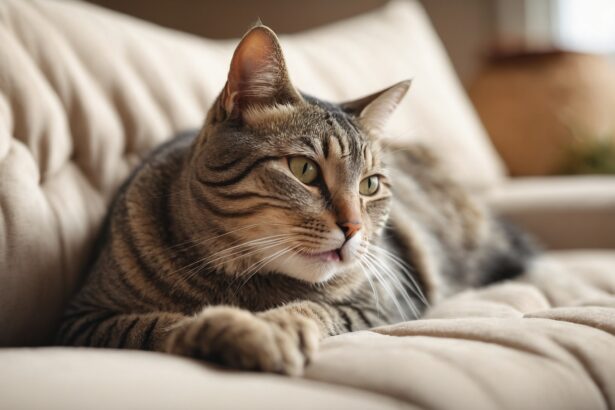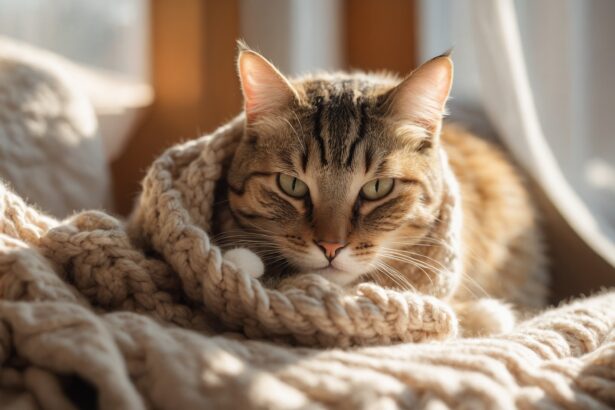Catnip, catmint, Nepeta… call it what you like, that minty little scent has a gift: it melts our felines in about two sniffs. Your queen rolls, rubs, chirps, then casually goes for a drink? All good—she just enjoyed a mini bliss break.
Nepeta cataria, what are you exactly?
A hardy perennial from the mint family, Nepeta cataria grows across Europe, Asia, and North Africa. Its 20–60 cm stems carry softly toothed, triangular leaves with a fresh, menthol fragrance.
It blooms in spring with delicate spikes, but the real magic isn’t the flowers—it’s the way many cats, even dignified seniors, light up around it. Fun tidbit: some big cats like tigers and leopards may react too. Picture those rolls of delight!
Curious about other scents that make whiskers quiver? Peek at the smells cats love.
Why does catnip have this effect?
The star molecule is nepetalactone. Inhaling it stimulates parts of the nervous system linked to pleasure and social behaviors, which explains the joyful flop-and-roll routine.
Most cats enjoy a 5–15 minute high, then a cool-down. After that comes a 30–60 minute “refractory” phase when catnip is basically invisible to them. Kittens rarely react before 5–6 months, and sensitivity is largely genetic—some cats simply don’t feel it.

Surprising, right? Another twist: a cat might adore dried catnip but ignore fresh leaves (or the reverse). Bodies are wonderfully individual—just like personalities.
Love decoding sweet kitty rituals? Here’s why some cats knead like little bakers.
Catnip and tummy comfort
When the tummy feels off (hairballs, minor discomfort), some cats seek greens. Catnip isn’t a medicine, but the calm and play can help them settle.
If your feline nibbles occasionally, no panic. If it’s frequent, check in with your vet—repeated grass or leaf chewing can signal irritation or another issue.
Dealing with recurring upsets? Here’s a helpful guide on why cats vomit.
Why don’t all cats react?
Sensitivity varies a lot, mostly due to genetics and maturity. Some remain unimpressed; others party at the faintest whiff.
Try different forms—fresh, dried, or spray. And if catnip is a no-go, consider other attractants like valerian or silver vine to unlock playtime.
To keep their environment enriching and joyful, explore our complete guide: all about catnip.
Best ways to use catnip
- Catnip-stuffed toys: great for reigniting playful zoomies in calm or indoor kitties.
- Catnip sprays: a few spritzes on a scratcher, cat tree, or play mat can make them irresistible again.
- Fresh or dried catnip: offer occasionally to spice up the environment and reduce boredom.
Home hack: tuck a teaspoon of dried catnip into a small cotton sock, knot it, and hide it in a tunnel or at the base of a cat tree. Surprise effect, zero crumbs.
Bonus hack: place “tired” toys in an airtight jar with a teaspoon of dried catnip for 24 hours. They come out recharged and oh-so-tempting.
Original tip to try: create a gentle catnip trail leading to the scratcher or cat tree when you bring home a new sofa. It nudges claws to the right place and makes furniture introductions smoother.
Want more enrichment ideas and cat-safe setup tips? Keep their curiosity blooming while avoiding risky greens by checking the plants that are dangerous for cats.
Common mistakes to avoid
- Mixing up “catnip” and “cat grass”: catnip (catmint) affects behavior; cat grass (young wheat/barley) helps hair passage. Different goals, different plants.
- Spraying everything at once: over-scenting your whole home can cause overstimulation and stress. Target key spots instead (scratcher, cat tree).
- Blowing catnip into the nose: it’s unnecessary and stressful. Let your cat come at her own pace—autonomy matters.
- Storing catnip toys in the open: volatile oils evaporate quickly. Keep them in a sealed jar or pouch to preserve potency.
Contraindications and precautions
Catnip is considered safe and non-addictive. As always, aim for moderation and watch your cat’s signals—every feline has her own sweet spot.
If your kitty gets irritable, remove the plant and offer a quiet break. In case of any unknown plant ingestion, review the list of toxic plants for cats and call your vet if needed.

Where to buy and how to grow it
Choose pet specialty stores and garden centers. You’ll find it in pots (easy) or as seeds (fun and budget-friendly).
Sowing catnip at home
- When: spring. Soak seeds for 24 hours first.
- Kit: ~10.5 cm pot and universal potting mix. Moisten well.
- How: 1–2 seeds per pot, cover lightly with substrate. Mist to settle.
- Light: partial shade outdoors or a bright room indoors, away from drafts.
- Water: keep the mix moist; germination takes 14–20 days. Repot into a larger container later.
Little extra: rotate between fresh, dried, and spray to prevent habituation and keep the “wow” alive.
For a deeper dive into timing, varieties, and fun games to pair with it, explore our complete catnip guide.
FAQ
What’s the difference between catnip and cat grass?
Catnip stimulates playful behavior; cat grass (wheat/barley sprouts) mainly supports hair passage and digestive comfort.
How often can I offer catnip?
1–2 short sessions per week keep it special without overexciting your cat. Leave at least an hour between two exposures.
My cat doesn’t react to catnip—what now?
Totally normal. Try different forms (fresh, dried, spray) or other attractants like valerian or silver vine.
Is catnip safe for kittens and seniors?
Generally yes when brief and supervised. Kittens often don’t respond before 5–6 months; for seniors, go gently and watch their comfort.








